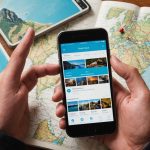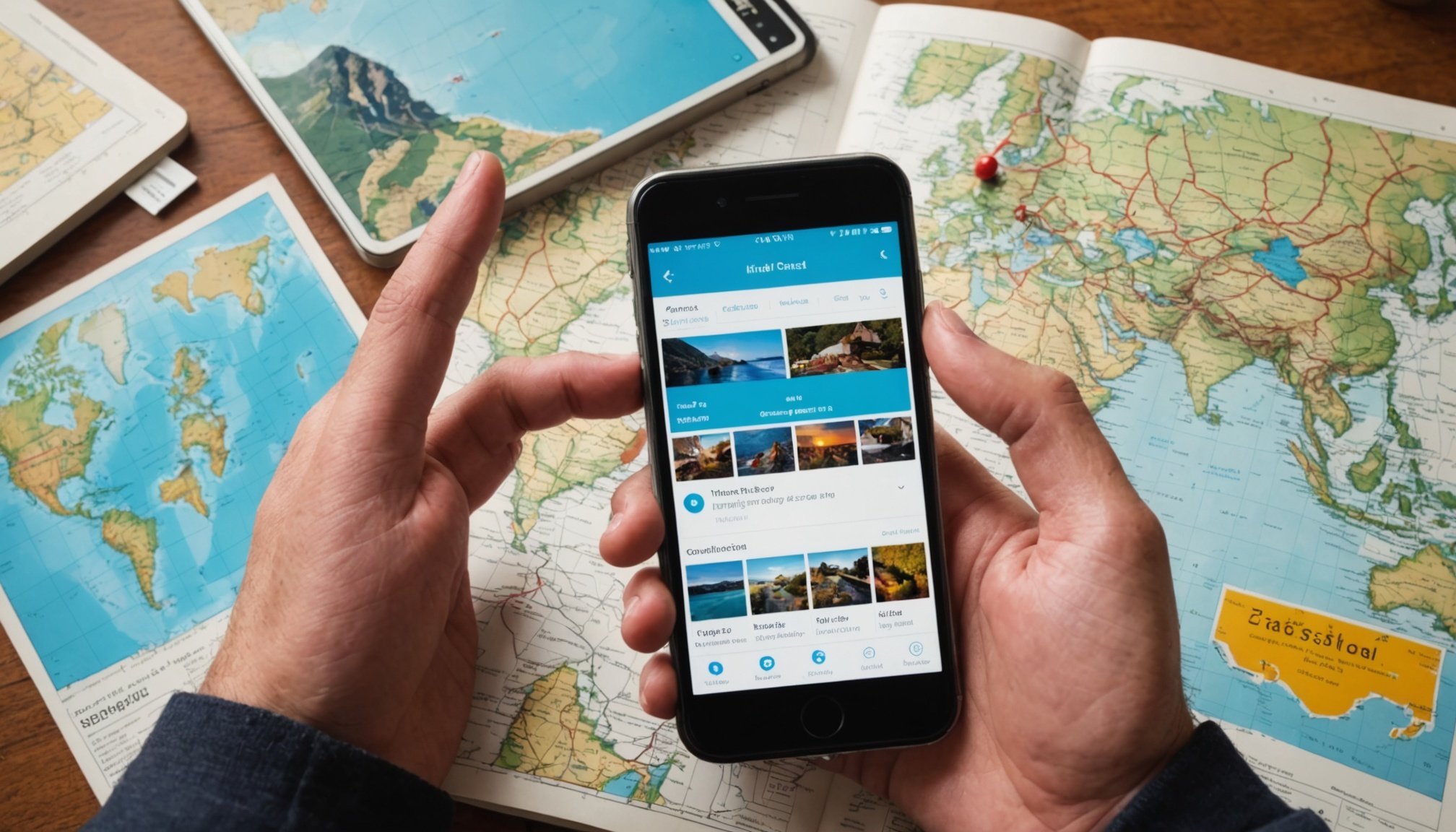Understanding the Purpose of Travel Itineraries
A Travel Itinerary is more than just a schedule; it’s a roadmap to make the most out of your journey. Having a clear travel plan ensures that you efficiently allocate your time and resources. This structured approach is invaluable, reducing stress by helping you anticipate and prepare for different scenarios.
The primary Purpose of Itineraries is to enhance your travel experience by providing structure. With a solid itinerary, you’re less likely to miss out on must-see destinations and hidden gems. It allows you to precisely balance sightseeing with relaxation, ensuring your travel feels enriching rather than overwhelming.
Also to discover : Mastering Real-Time Traffic Alerts: Unlock Your Smartphone”s Potential for Instant Updates!
Travel itineraries offer unique Benefits of Itineraries tailored for different kinds of travelers. For solo adventurers, they provide a sense of security, outlining where they should be and when. Families benefit by effectively managing time between activities suited for various ages, ensuring everyone has an enjoyable experience. Groups find itineraries crucial as they align interests and coordinate activities, mitigating the chaos of differing preferences.
Ultimately, a well-crafted itinerary is a tool that empowers travelers to explore with confidence, making informed decisions and fully enjoying their travel experiences.
Topic to read : Mastering Smart Home Comfort: Your Guide to Managing Air Conditioning Units with Your Smartphone
Essential Tools for Crafting Itineraries on Smartphones
Planning a trip can be both exciting and overwhelming, but travel apps are here to ease the process. Popular itinerary planning tools like Google Trips, TripIt, and Roadtrippers offer a variety of features to keep travel details organized. Each app provides different capabilities to suit varied travel styles and preferences.
Google Trips excels in automatically gathering travel reservations from your email and suggesting places to explore, whilst TripIt shines in its ability to turn emails into a comprehensive itinerary, accessible offline. Roadtrippers, on the other hand, is ideal for road trips, helping travelers discover interesting stops along the route.
To select the right itinerary planning tool, consider your specific travel needs. If real-time updates are critical, TripIt may be the preferred choice due to its synchronization capabilities. However, for those embarking on a lengthy road adventure, the detail-oriented approach of Roadtrippers might be beneficial. For casual explorers, Google Trips offers excellent automated suggestions.
Being mindful of each tool’s unique features will aid in maximizing your travel experience. Whether you prioritize discovering hidden gems or need seamless syncing, smartphone travel resources are invaluable companions on any journey.
Designing Visually Appealing Itineraries
Creating aesthetically pleasing travel plans can be both enjoyable and rewarding. The advantage of Itinerary Design is that it enhances the travel experience through engaging visuals and organized content.
Canva for Itinerary Design
Canva offers a robust platform to craft visually appealing travel plans. With its myriad of templates tailored for Itinerary Design, users can effortlessly produce professional-looking Visual Travel Plans. Its drag-and-drop interface allows for quick modifications, ensuring that even beginners can develop aesthetic itineraries. Canva’s built-in library of fonts and images assists in creating cohesive and visually attractive designs.
Using Google Slides for Customization
For those who prefer a more customizable approach, Google Slides serves as an excellent tool. It supports detailed personalization of Aesthetic Itineraries, with freedom to integrate various text formats, images, and animations. By designing itineraries here, you can easily share them online, allowing seamless collaboration with travel companions.
Integrating Personal Photos and Visuals
To truly personalize Visual Travel Plans, incorporating personal photos is essential. Adding these visuals enhances storytelling, making the itinerary more engaging. Consider organizing images by itinerary sections to maintain cohesive design. Applying consistent color schemes improves readability, ensuring each element supports the overall narrative. This approach not only enriches the experience but also turns itineraries into cherished keepsakes.
Examples of Engaging Travel Itineraries
Embarking on a journey is more than just a trip; it’s an opportunity to create lasting memories. Sample itineraries play a crucial role in shaping these experiences.
Consider an engaging travel plan centred around adventure. From hiking the majestic trails of Patagonia to diving into Australia’s Great Barrier Reef, these itineraries promise excitement and exploration. Such plans usually blend adrenaline-pumping activities with periods of rest to prevent burnout.
For those seeking relaxation, itinerary templates for spa retreats in Bali or luxury cruises around the Mediterranean offer a tranquil escape. These itinerary templates prioritize leisure and comfort, focusing on self-care and rejuvenation.
Cultural immersion itineraries, on the other hand, provide a window into the soul of a destination. Picture walking through the historic streets of Kyoto during the cherry blossom season or exploring ancient ruins in Rome. These engaging travel plans are designed to immerse travelers in the local culture, cuisine, and traditions.
Ultimately, what makes an itinerary engaging and memorable is its ability to balance structured exploration with moments of spontaneity. By tailoring activities to personal interests and incorporating unique local experiences, travelers can create a journey that resonates long after the return home.
Sharing Your Itinerary Effectively
Navigating the world of travel involves more than just bookings. Itinerary Sharing is crucial for a seamless adventure because it allows you to inform others of your travel plans, ensuring safety and collaborative fun. Optimise your travel experience by leveraging technology to share travel document distribution efficiently and securely.
Sharing via Social Media Platforms
Social media is a powerful tool for sharing those plans, provided privacy settings are meticulously managed. Keep your locations safe by sharing only broad details publicly, while reserving precise itineraries for private posts or messages. This ensures you’re keeping friends informed without compromising personal security. Platforms such as Facebook and Instagram allow selective visibility settings, meaning you can manage who sees your travel details.
Emailing Itineraries to Friends and Family
Email remains one of the most reliable methods for itinerary sharing. Ensure all relevant travel document distribution occurs smoothly by using email clients that support easy attachment or link sharing. For added security, consider password-protecting sensitive documents or using encrypted email services. This ensures confidentiality and proper distribution.
Collaborative Planning with Travel Buddies
Travel with friends is made simpler with collaborative tools. Services like Google Docs or TripIt allow shared access to plans, enabling real-time updates and itinerary modifications. Ensure privacy by adjusting sharing permissions, granting access only to necessary collaborators.
Tailoring Itineraries to Different Travel Styles
In the realm of travel planning, acknowledging diverse travel styles is essential. From backpackers to luxury seekers, each traveller possesses unique preferences and needs. Crafting custom itineraries involves identifying these styles to ensure a fulfilling experience.
Identifying Different Travel Styles
A custom itinerary starts with recognising the traveler’s style. Backpackers often seek budget-friendly options, aiming to explore local cultures closely. In contrast, luxury travellers prefer exclusive experiences and lavish accommodations. Recognising these contrasts aids in developing personalized travel plans.
Adapting to Diverse Preferences
Once a travel style is identified, adapting the itinerary becomes crucial. For backpackers, this may involve incorporating hostels and public transportation, while luxury travellers might appreciate high-end hotels and private tours. Personal elements in each custom itinerary enhance the overall experience and meet individual desires.
Flexible Itineraries for Spontaneous Travelers
Finally, a hallmark of effective travel plans is their flexibility. Spontaneous travellers appreciate itineraries that allow detours and unplanned adventures. A custom itinerary with built-in flexibility can encompass unexpected delights and make the journey more enjoyable. This approach empowers travellers to explore with freedom, ensuring memorable and personalised travel experiences.
Best Practices for Creating and Sharing Itineraries
Creating travel itineraries can be a rewarding process when approached using Effective Travel Planning methods. To make itineraries User-Friendly, it is vital to adhere to several best practices.
Importance of Clarity and Simplicity
Clarity and simplicity are fundamental in creating effective itineraries. An itinerary should be straightforward, avoiding unnecessary jargon or complex terms. By using clear language and organizing information logically, travelers can easily access the details they need, without confusion. This can be done by using simple headers, bullet points, and concise descriptions of each travel component.
Gathering Feedback from Travelers
Incorporating traveler feedback is essential in improving future itineraries. By collecting reviews and suggestions from those who have used the itinerary, planners can gain insights into areas for improvement. Whether it’s about including more local spots or adjusting time allocations, feedback is invaluable in enhancing the overall itinerary experience.
Regularly Updating Itineraries
Travel conditions can be unpredictable, which highlights the need for regularly updating itineraries. It’s crucial to stay informed about changes in travel conditions and modify itineraries to reflect these updates, ensuring travelers have the most timely and relevant information. Proactive adaptation to evolving circumstances can significantly improve the travel planning process.











